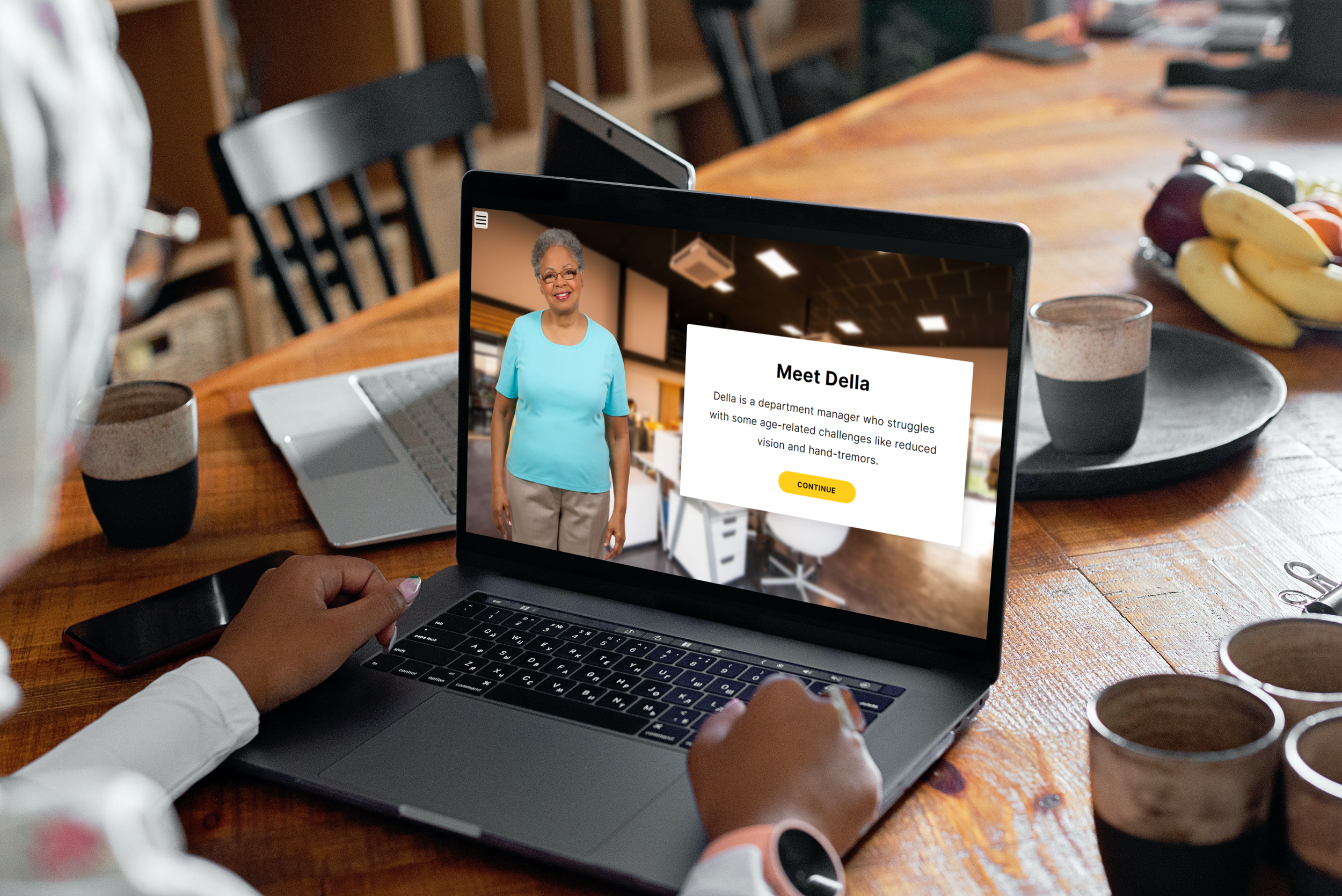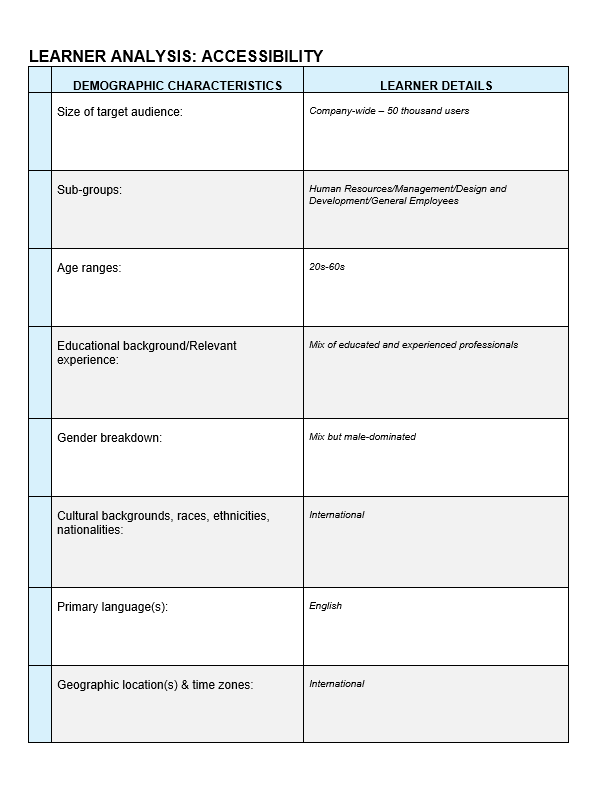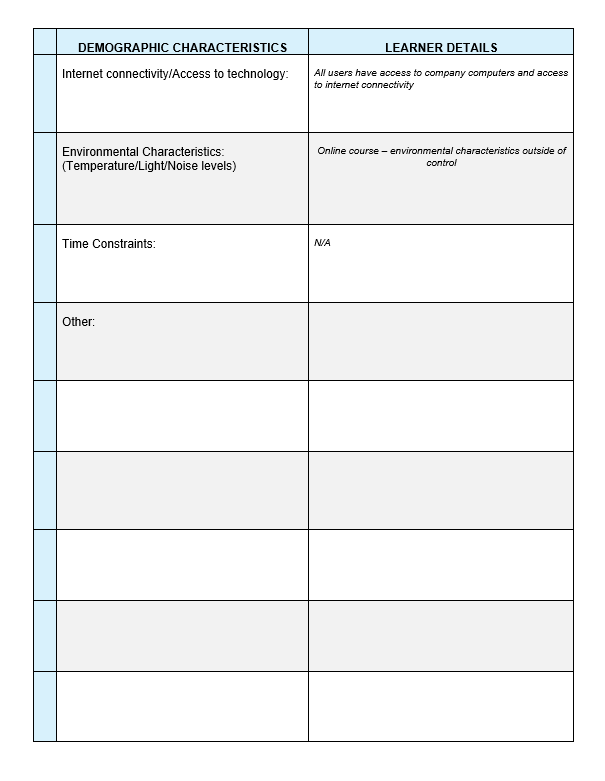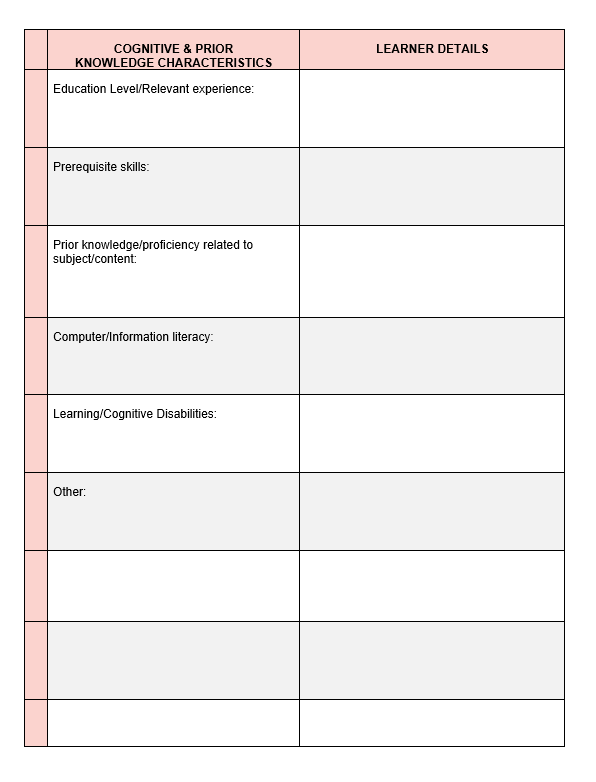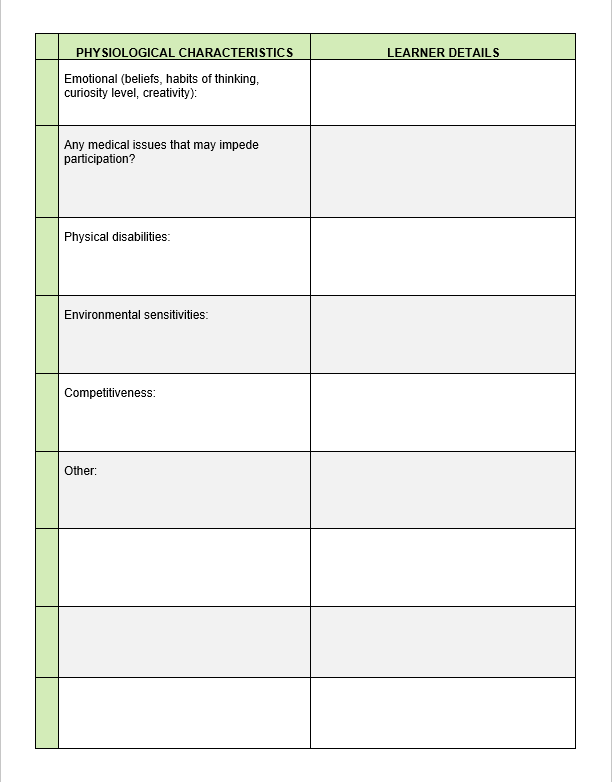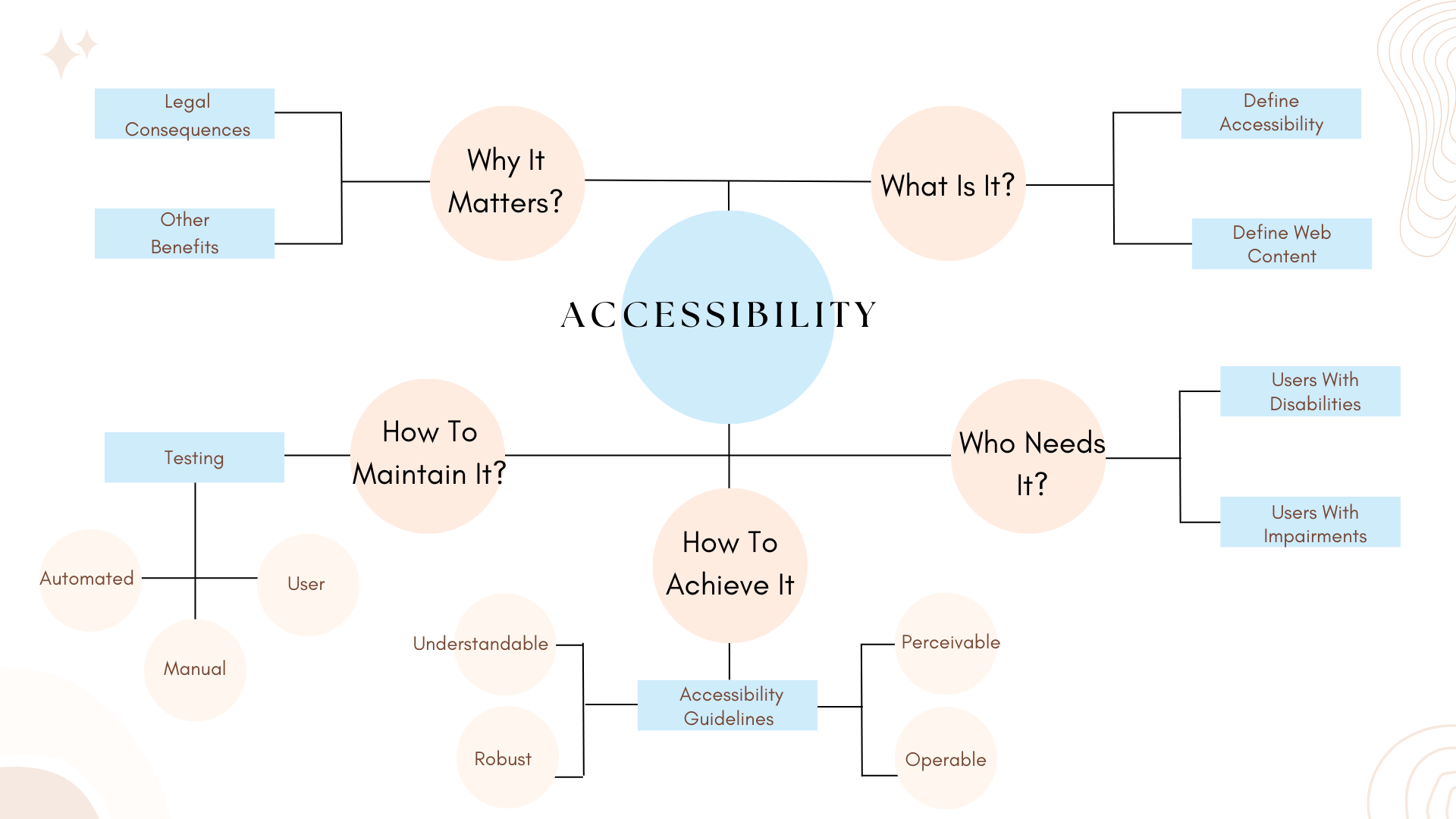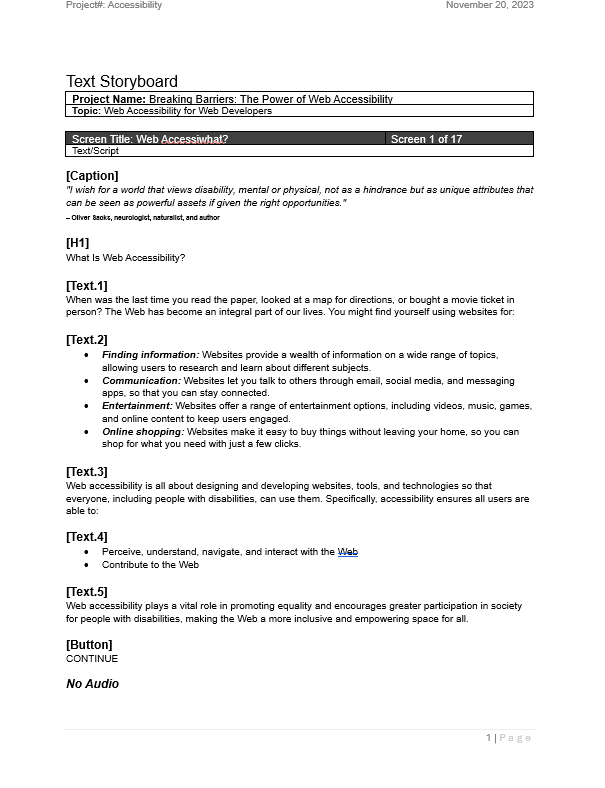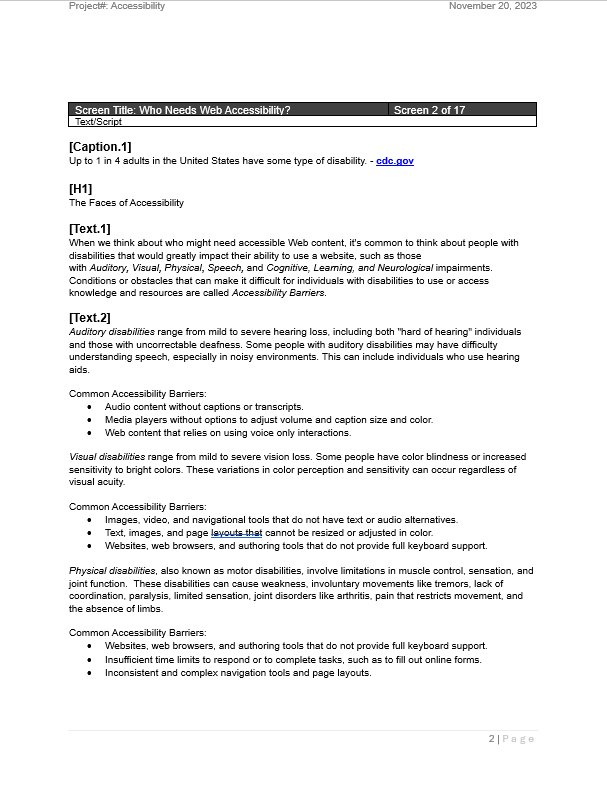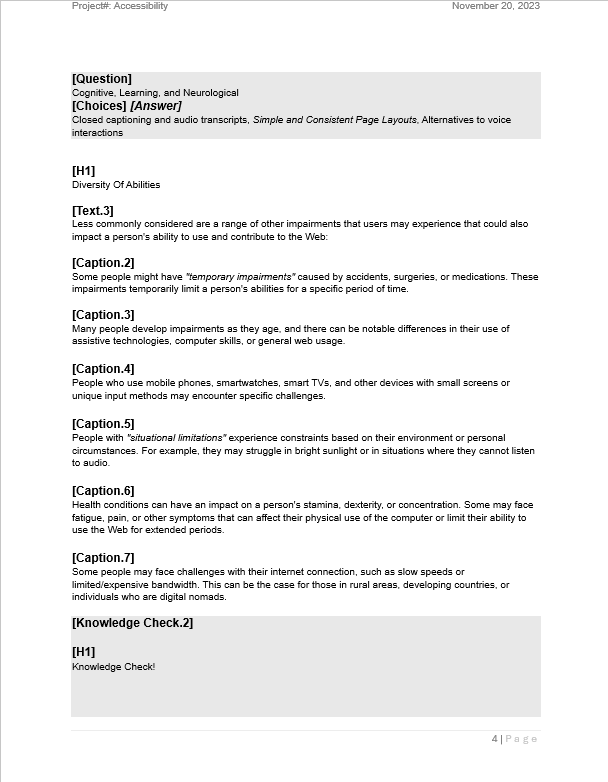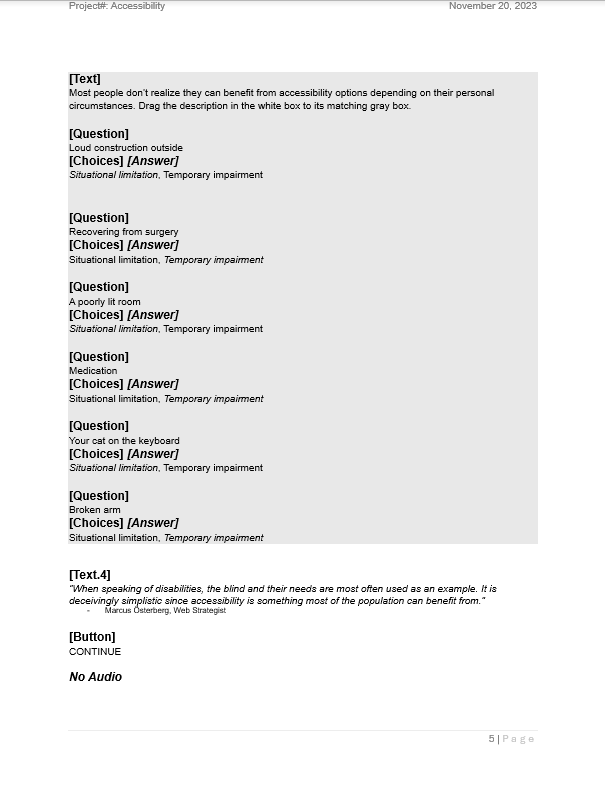the power of web accessibility
Audience: Tech company employees at a large tech company
Skills: Instructional Design, eLearning Design, Analysis, Visual Design
Tools Used: Articulate Rise, Microsoft Powerpoint
.the details
I designed this eLearning module for a global tech company that was in the process of rolling out accessibility training. As reliance on the web grows, so too does the attention on accessibility barriers, or obstacles that prevent users with disabilities from accessing knowledge and resources. There's been a recent spotlight on how companies are meeting this rising demand, but identifying and resolving accessibility barriers is challenging work.
.my Process
To determine the focus of the eLearning simulation, I worked closely with the company’s Digital Accessibility and Compliance Consultant, who acted as my Subject Matter Expert (SME) throughout the project. I conducted several informational interviews to identify the performance gaps within the company and define their business goals.
As I analyzed the situation, there seemed to be two main issues. The first issue was that employees had some knowledge gaps in understanding what accessibility is and how to apply it. The second was that the employees had a fundamental lack of understanding the relevance of accessibility. These two issues resulted in many accessibility barriers being overlooked, with potentially disastrous consequences.
After determining the knowledge gaps, I completed a learner analysis. An example is provided below - all identifying information has been removed.
action map
Using the information from my initial analysis, I worked with the SME to determine the top goals for instruction. The SME wanted to focus on defining accessibility, increasing empathy, and and accessibility application. While these goals were a great start, I wanted to narrow the scope of the second goal. Increased empathy is not something that could be easily measured, and in our discussions it became clear that the SME wanted the employees to understand the relevance of accessibility and how it could apply to anyone they know, including themselves. Armed with this information, I developed an action map. Accessibility training can be very complex, so we decided to stick to basic information.
Storyboard
After setting the instructional goals with the action map, I outlined the information from SME interviews and recommended resources. I then crafted a storyboard prototype for the course, starting with a text storyboard as the eLearning would involve substantial text.
Once I had the script laid out, I chose Articulate Rise for its user-friendliness and quick turnaround. I went through the program to get a better idea of format and interactions, and then designed the storyboard. In an effort to make my course relatable, I emphasized graphics that portrayed diverse individuals with disabilities in professional settings.
Development
Given the text-heavy nature of the course, I used various interactions, graphics, quotes, and facts to break up the content. I used a warm, friendly yellow in my color palette, along with basic gray, white, and black shades to avoid overwhelming learners. While I had expected the actual course development to be a simple process, I found it challenging to include the amount of text. I played around with several different layouts, attempting to condense text into collapsible interactions to mitigate overwhelm. I really enjoyed developing the scenario-based assessment - initially I had wanted to create a more interactive experience, but since I didn’t have the time to develop such a course this was a good compromise.
.Key Takeaways
I was really enthusiastic about the content of this course. I already had some background knowledge on accessibility, and I loved doing more of a deep dive. I would have loved to develop a large-scale training on this topic, and I was constantly coming up with new ideas for interactivity and content. Working with the SME was invaluable - his expansive knowledge and passion was incredibly inspiring, and I worked hard to turn out a product in line with his vision while also keeping the goals of the business aligned.
I’d love to connect with you!

